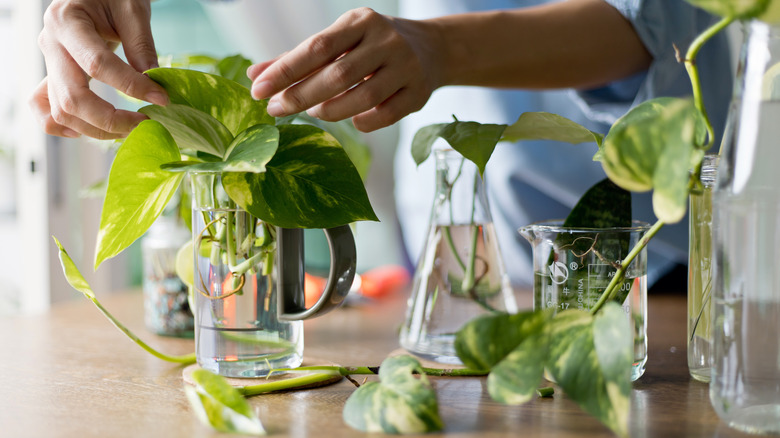Houseplants can add beauty and life to our homes, but it can be challenging to keep them healthy. You may sometimes feel discouraged when you notice your plants starting to wither despite all your efforts to nurture them with care and love. However, there is an interesting and relatively simple technique that can help you rejuvenate your beloved plants: propagation.
Propagation is the process of creating new plants from existing ones, and it can work wonders to revive your ailing plants. This technique involves taking a cutting from a healthy plant and encouraging it to grow roots and develop into a new plant. Propagating your plants not only helps to revive them but also allows you to create new plants to add to your collection or share with others. It can be a rewarding and enjoyable experience to watch your greenery grow and flourish. Plus, you’ll have the satisfaction of knowing that you’ve helped to give your struggling plant a new lease on life.
Getting started with plant propagation
@tayamay95
Saving my dying plant 🪴 #plantpropagation #plantmom #planttok #cuttings #propagationprocess #dyingplant #waterpropagation
♬ Pieces – Danilo Stankovic
You just need a few things to start, such as pruning shears or scissors, sterile containers, and water or well-draining potting mix. It’s not required, but you might want to use rooting hormone to boost your success rate. Once you’re all set up, you can choose which technique you want to try.
To propagate in soil, start by finding healthy sections on your plant. Look for green, firm, and pest-free portions. Then, use your shears or scissors to make clean cuts just below a leaf node to create 4 to 6-inch cuttings. Trim the lower leaves of each cutting, leaving a bare stem to prevent rot and encourage root growth. If you’re using rooting hormone, dip the cut end of each cutting into it to promote root development. Plant the cuttings 1 to 2 inches into the potting mix. Put the container in a spot with indirect sunlight to avoid scorching. The process for water propagation is similar, but instead of planting in soil, put the cut end of each cutting in a container of water, only submerging the stem. Change the water every few days to prevent stagnation. You should see roots starting to form after a few weeks to a couple of months. Once the roots are substantial, transplant the cuttings into the soil.
Tips for successful propagation

When you take cuttings from a healthy part of a plant and provide them with the right conditions, they have a remarkable ability to develop roots and grow into new plants, harnessing the plant’s natural regenerative powers. However, it’s important to remember that propagation takes time. Be patient and resist the urge to disturb or check the cuttings too often, allowing them time to establish roots.
When propagating in water, make sure the water is clean and free from contaminants. You can use filtered or dechlorinated water to prevent any adverse effects. Maintaining a stable temperature and humidity level is also crucial for successful propagation. Sudden temperature fluctuations or arid conditions can hinder root development. Different plant species may have variations in the propagation process. Research the specific needs of your plant type for the best results. By understanding the science behind propagation and following these tips, you can increase your chances of success and enjoy the satisfaction of giving your dying houseplants a new lease on life.



